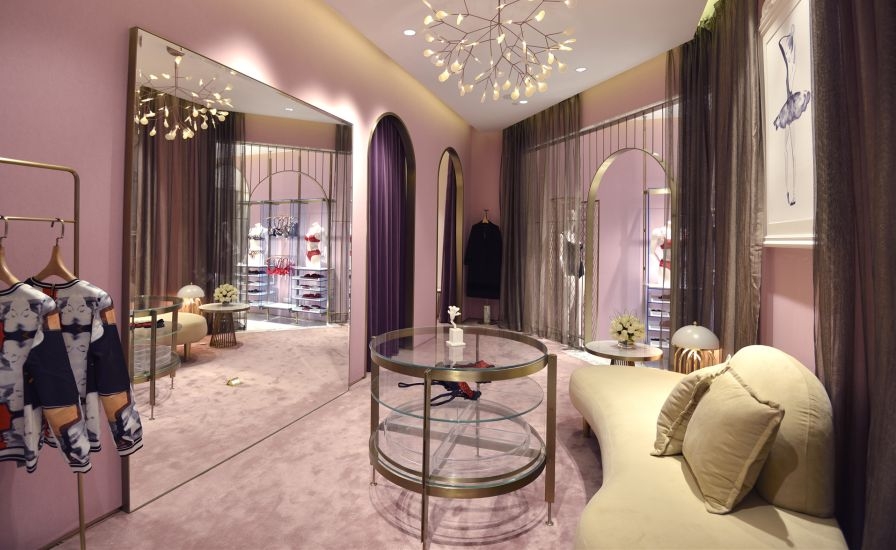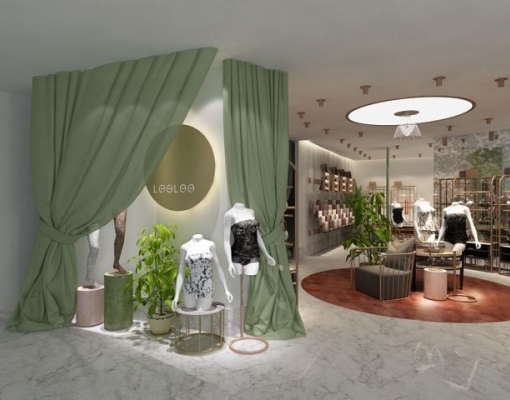
Intimoda Edit
Leglee's New Concept for Chinese Lingerie Boutiques
21 February 2017
In an economy led by web sales, Leglee has opened a chain of high-end multibrand lingerie boutiques in mainland China since the end of 2015.

It has injected a dose of new energy into the underwear retail market in China. Leglee benefits from the experience of its parent company, the Chinese knitwear manufacturer, Limax Group, as well as General Manager, Liao Xinjun's background in retail management. We spoke to Liao Xinjun to learn more about Leglee's plans.

China's underwear market has been in a slump, how do you see this as an opportunity?
First of all, in terms of all luxury goods, designer clothing and accessories have been enjoying the fastest growth, with a minimum growth rate of 15%. Therefore, this segment is a great opportunity in China. Secondly, since 2010, Chinese attitudes have changed and are now more inclined towards unique, high-end brands. It's the same with lingerie. There are no high-end lingerie brands in the domestic market, and the midrange market was monopolized by foreign or local brands years ago. The truly exceptional foreign brands are at the margins of the Chinese market. Therefore, bringing some outstanding foreign brands into the center of the Chinese market is the only way to succeed.
What is your take on the current Chinese lingerie market?
Although market research shows that the luxury goods business in China is slowing, the lingerie sector is expected to grow by 18%. Chinese luxury lingerie consumption accounted for one-third of total industry turnover, or approximately 6 billion dollars from a total market of 20 billion dollars. Luxury lingerie sales in Asia surged by 40%, much of which came from Chinese consumers. We did a lot of research before we started this project. In two previous studies, a report showed that 130 million people were considered middle class in China, and the other one said that the number of middle-class people was 80 million. If we use the 80 million figure, this number includes both men and women – and most men's underwear is bought by women. If women account for one-third of the total middle-class population, that is at least 25 million consumers; these are our target customers. In Japan and Korea, women buy eight sets of lingerie per year, which is more than the typical Chinese woman. As demand increases, so will consumption.
What is Leglee's greatest advantage over competition?
Many shopping malls rank Leglee first among high-end lingerie retailers, but we still have much work to do. To be frank, we have no absolute advantage right now, but this will change in the future. In terms of brand portfolio and image, we are something new in China. We are confident for two reasons. One, our team has a great deal of high-end, multibrand retail experience. As a multibrand retailer, we have a lot of advantages over monobrand stores. Secondly, we have a strong presence in the country, in terms of branding and distribution networks.
How large are Leglee stores?
The smallest is 80 square meters and the biggest is 200 square meters.
Can you tell us more about Leglee's design concept?
A brand must always be reinventing itself, and I often tell our team the advantages of this process of change. Our aim is to show our customers the freedom and independence of the European woman. This romantic, elegant lifestyle is behind our store's design and branding. The European aristocratic lifestyle is not about money, but more about spirit, such as responsibility and the courage to sacrifice. We are more than just an intimate apparel store; we are a platform where our target consumer – the upper-class, elite, intellectual woman – can find her inner peace.

What is the price range of Leglee's products?
Each category is different. Generally, between 150 USD to 500 USD.
How do you work with international brands? Besides
using buyers, we are also considering other ways. For
example, Leglee might collaborate with a brand to develop an exclusive
collection for our stores. There are many brands that want us to help
them increase their presence in the Chinese market, but we haven't
started working on this yet. Since we are going to open 30 stores in the
next three years throughout the country, we are currently focusing on
that.
How many international brands are you planning to work with?
Our aim is to reach 45 to 50 brands by the end of 2017.
Why do you think these international brands can use Leglee to create a new market?
These
international brands have brought Leglee many things; in return, we
help them to enter the Chinese market and introduce them to Chinese
consumers. Our main priority is the brand, and by recommending
outstanding foreign brands, we enhance our own reputation.
Where are you planning to open Leglee stores?
We will
start in first-tier cities, and expand mainly into second-tier cities.
Some third-tier cities will also be included, because of the large
number of stores we are opening. We do not plan to open in fourth-tier
cities for at least five years. The basic Leglee strategy is to open
stores in the top three shopping malls in each city.
How many stores do you plan to open?
We plan to reach 30 stores within three years. We plan to work with large department stores that have the same goals as Leglee.
There are some luxury brands that are really successful in e-commerce. What is Leglee’s e-commerce strategy?
We
tried out e-commerce in previous projects and found that
middle-to-high-end consumers currently do not prefer online shopping.
However, e-commerce is the trend; when Chinese millennials will become
our key consumers, the situation will be different. It may take another
three to five years for the shift to become apparent.
Among the brands offered
Fogal, Falke, Cervin, Pierre Mantoux, Doré Doré, Aubade, Chantelle, Chantal Thomass, Dita Von Teese, Atelier Intimo, Pretty Wild, Vannina Vesperini, Lucia Berutto, Reineren, OWA
Copyright 2025. All rights reserved - Terms








